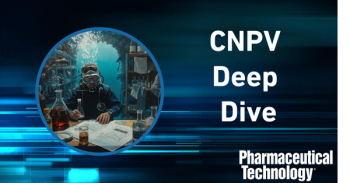
Equipment and Processing Report
- Equipment and Processing Report-05-20-2020
- Volume 13
- Issue 6
Preparing to Meet Manufacturing Needs During a Pandemic
US manufacturers focus on preparing capacity while vaccines and treatments for COVID-19 are being developed and tested.
US bio/pharmaceutical manufacturers are working urgently to not only develop vaccines and treatments for COVID-19 but to ensure that the manufacturing capacity to produce them is available once they are approved. Preparing capacity before a drug is even in clinical trials is a significant departure from standard practice and carries the risk of investing capital in equipment and facilities for a drug that might not become commercial, but the pressing need for treatments and vaccines for the novel coronavirus is driving new ways of planning for manufacturing capacity.
US Operation Warp Speed
The US government is taking on some of this financial risk through “Operation Warp Speed (OWS),” which is a public-private partnership to accelerate the development, manufacturing, and distribution of COVID-19 vaccines, therapeutics, and diagnostics, the Department of Health and Human Services (HHS)
Approximately eight vaccine candidates are expected to be chosen to go through early-stage small clinical trials, and three to five candidates will proceed to larger-scale trials. HHS said that in the OWS vaccine development plan, “the manufacturing capacity developed will be used, to the extent practicable, for whatever vaccine is eventually successful, regardless of which firms have developed the capacity.” The government is also making plans for the infrastructure for packaging and distributing an eventual vaccine, including cold-chain storage and a supply of glass vials.
Building vaccine manufacturing capacity
Biopharmaceutical companies are rushing to create capacity for COVID-19 vaccines both internally and through partnerships with contract development and manufacturing organizations (CDMOs). The past few weeks have brought multiple announcements of partnerships and scale-up plans.
Moderna
Pfizer, which is co-developing an mRNA vaccine with BioNTech SE, is gearing up for potential production at three US facilities: St. Louis, MO for critical raw material manufacturing; Andover, MA for drug substance manufacturing; and Kalamazoo, MI for formulation and fill, the company said in a
Johnson & Johnson
Novavax is moving forward with clinical development of its COVID-19 vaccine candidate, with funding by the Coalition for Epidemic Preparedness Innovations (CEPI) (a consortium created in 2017 with funding from multiple countries and the Bill and Melinda Gates Foundation) that will be used for clinical trials, process development, and manufacturing. In a
CEPI has also funded Inovio’s investigational DNA vaccine (INO-4800). Inovio
Catalent is also manufacturing the drug substance for human clinical trials and potential commercial manufacture of Arcturus Therapeutics’ COVID-19 mRNA vaccine candidate (LUNAR-COV19), Catalent
UK-based AstraZeneca and the University of Oxford announced a development and manufacturing partnership
Packaging and aseptic filling capacity are also crucial for vaccine manufacture. Injectable vaccines are traditionally packaged in glass vials, and a supply of vials is crucial. The possibility of using polymeric prefilled syringes that could be made using the blow-fill-seal (BFS) process, which produces the containers and fills them in one step, is being considered.
Treatment capacity
In addition to preparing for rapid vaccine scale-up, manufacturers are expanding production of therapeutics that are being tested as treatments for patients with COVID-19. Gilead Sciences’ investigational antiviral remdesivir received emergency use authorization from FDA for the treatment of COVID-19 on
Multiple suppliers have also been ramping up capacity for hydroxychloroquine (HCQ) and related products that are being used as investigational treatments for COVID-19. In late March, Bayer, Novartis, Mylan, and Teva
CytoDyn’s leronlimab, a novel CCR5 antagonist with the potential for multiple therapeutic indications, received an emergency investigational new drug (EIND) authorization from FDA and is in clinical trials. On May 5, 2020, CDMO Ajinomoto Bio-Pharma Services
Designing facilities for the future and for the “new normal”
As manufacturers consider how to rapidly scale up capacity for drugs to combat the global pandemic, new technologies for facility and process design and new ways of planning and executing facility construction may play a role. In addition-at least until a successful vaccine is widely available-companies need to consider how to keep their manufacturing workforce healthy by using engineering controls and new work practices. On Tuesday, May 26, the Pharmaceutical Technology and BioPharm International editors will host a webcast with facility design experts to discuss these topics.
Articles in this issue
over 5 years ago
Intelligent Packaging Uses Technology to Track Packages, DosesNewsletter
Get the essential updates shaping the future of pharma manufacturing and compliance—subscribe today to Pharmaceutical Technology and never miss a breakthrough.




